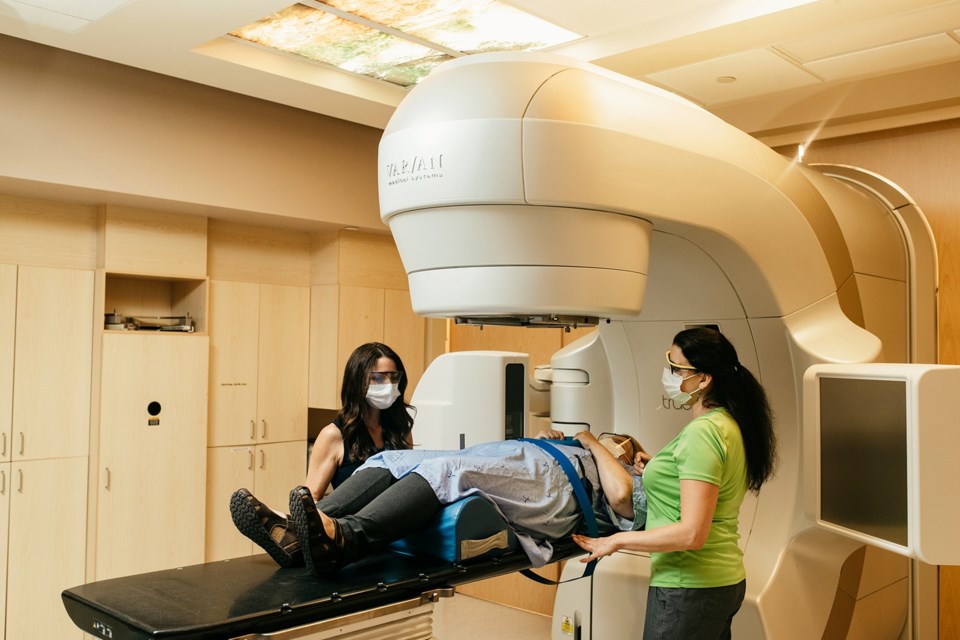Sudbury's popular 50/50 cash lottery for Health Sciences North (HSN) is helping to pay for renovations to one of the five bunker rooms for linear accelerators (LINAC) for radiation treatments at the Shirley and Jim Fielding Northeast Cancer Centre to enhance cancer treatment in Northeastern Ontario.
Every ticket purchased through HSN’s monthly 50/50 Cash Lottery for the North helps fund equipment and enhancements to treatment areas, said a news release from the HSN Foundations.
The draws are held monthly and winners names are published each month.
The Foundations said $500,000 has been directed to upgrading and renovations at one of LINAC bunkers at the cancer centre.
Anthony Keating, the president and chief development officer for foundations and volunteer groups at HSN, said by playing the hospital lottery, ticket buyers are supporting local health care.
“By purchasing tickets, you are also supporting our future capital redevelopment projects to help build a stronger health-care system — benefiting some of our most vulnerable populations such as seniors, children, and those struggling with mental health and addiction challenges," he said.
The LINACs direct a beam of radiation at cancerous tumour and cells in the body, killing cancerous cells by damaging their DNA, said the release. The current cooling equipment in the LINACs is older and requires complete replacement. This year, one LINAC is being replaced through Ontario Health – Cancer Care Ontario, but renovations to the radiation bunker that houses the equipment are required and not covered by government funding.
LINAC bunkers are complex structures with heavy radiation shielding (concrete walls up to 2.5 metres thick in certain places) and advanced safety, electrical, cooling, and ventilation systems.
The LINAC machines are used to provide radiation treatment to cancer patients who travel from all over Northeastern Ontario to get advanced care at the cancer centre.
Currently, the radiation department at the Sudbury cancer centre has the best wait times in Ontario for referrals to consult, said the release. The department treats approximately 20 patients per day per LINAC and completes approximately 1,800 radiation treatment courses per year. Each radiation course is personalized to the patient and can contain between four and 35 individual treatments.
Dr. Andrew Pearce, head of radiation oncology at the hospital and the radiation physician lead for the Northeast, said the radiation program allows the staff to treat cancers and spare normal tissues from further damage.
"By modernizing our equipment, we can simultaneously improve control rates and decrease the side effects of radiation treatment. These changes are not possible without the generous support of our community which funds the infrastructure necessary to support this upgrade to our equipment.” said Pearce.
The HSN Foundations, which includes NEO Kids Foundation, the Northern Cancer Foundation and the HSN Volunteer Association, said it has made several significant purchases in recent times to support the highest-quality patient care, which has included the following:
- Breast vacuum biopsy system for breast screening and assessment service.
- Two infant incubators for the Neonatal Intensive Care Unit.
- Fleet of defibrillators for the Emergency Department and other critical areas.
- Two colonoscopes for use in Endoscopy & Minor Procedures.
- Two Drager Jaundice Meters to streamline screening practices for NEO Kids Program.
- Two Exera Video Processors and Lightsources for the cancer centre to allow head and neck cancer surgeons to more accurately evaluate the effects of cancer treatment.
- Six dialysis chairs for the Nephrology department.
- A second “Hana” surgical table that is designed for use in the anterior hip replacement procedure.
- New laser for the Ear, Nose and Throat (ENT) surgical team used to perform the stapedotomy procedure on patients with an inherited condition called otosclerosis, which causes deafness.
- 10 “Nara” bassinets used to help keep newborn babies safe, and designed to improve visibility and interaction from the bedside.
- An O-arm imaging tool (2D/3D) for the surgical department, providing enhanced visibility of the surgical area in real-time resulting in more precise surgery for patients.
